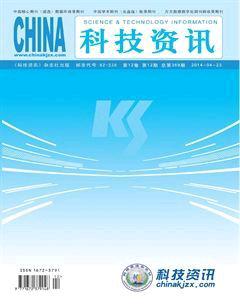Co3O4/GO和Mn3O4/GO催化Oxone氧化NOx的比较研究
万凤至+朱少波
摘 要:文章比较了Co3O4/GO及Mn3O4/GO两种催化剂催化Oxone对NOx氧化效果的影响,考察了pH、Oxone投加量及温度等因素对催化Oxone氧化NOx效果的影响。研究结果表明:在相同的试验情况下,Co3O4/GO催化Oxone氧化NOx的效果要优于Mn3O4/GO。
关键词:Co3O4/GO M3O4/GO Oxone NOx
中图分类号:G64 文献标识码:A 文章编号:1672-3791(2014)04(c)-0076-03
氮氧化物(NOx)对环境的污染已经受到全世界的普遍关注,如何有效地消除氮氧化物是当前研究的热点问题[1]。而催化氧化法成为了消除NOx有效的方法之一[2]。
SO4·-是一种高活性的自由基,SO4·-与 ·OH类似,主要是通过电子转移、氢提取以及加成3种方式与有机物发生反应。研究认为,SO4·-具有更强的电子传递能力,不仅可在更宽的pH范围产生,而且在中性和碱性范围内,其氧化性均强于·OH,即使在酸性条件,两者也有相近的氧化能力,因此,大多数的有机污染物都能被其完全氧化从而达到最终的降解[3~5]。SO4·-的标准氧化还原电位为E0=+2.5~+3.1 V,接近于甚至超过了氧化性极强的羟基自由基(E·OH=+1.8~+2.7 V),它是一种高活性的自由基[6~8]。
本文在以往的工作基础上,以GO为载体制备Co3O4/GO和Mn3O4/GO两种催化剂,研究了pH、催化剂浓度、Oxone投加量、温度对催化Oxone氧化NOx的影响。
1 材料和方法
1.1 实验试剂
Oxone(2KHSO5·KHSO4·K2SO4),上海安而信化学有限公司;KMnO4、Mn(NO3)·4H2O、Co(NO3)2·6H2O,NaOH、NaNO2和浓H2SO4均为国产分析纯。
1.2 Co3O4/GO和Mn3O4/GO催化剂的制备
将氧化石墨粉末(25 mg)加入到正己醇(15 ml),通过超声15 min使其形成均匀分散的悬浮液,分别取0.2186 g的六水合硝酸钴和硝酸锰溶液到另一份正己醇(15 ml)。形成红色的溶液后与含有氧化石墨的悬浮液进行混合,并在室温下搅拌15 min使两种物质均匀的混合。然后再将混合物在140 ℃下加热5 h。反应结束后将反应体系冷却到室温,离心洗涤并用乙醇反复洗涤几次以除去其中的杂物。最后所获得的产物在60℃真空烘箱中烘干,即得产物Co3O4/GO和Mn3O4/GO。
1.3 实验方法
先用橡胶管把各个系统连接起来,形成一个封闭的气路。发生装置4的出气口连接到气体缓冲罐6的进气口,给系统提供足够的NOx。温控仪11的传感仪12缠在反应器9的筒壁上,温控仪11的加热带13也绑在其上,通过调节温控仪11给体系加热到所需的温度。在实验开始时,先准备好实验所需,连接好管路,关上发生装置的阀门2,把实验所用亚硝酸钠通过进料口1加到贮料室2中,盖上进料口的盖子,打开温控仪11给反应器9加热,当温度计指示达到预设定的温度,打开发生装置出气阀门3,让亚硝酸钠溶液均匀地流出,同时启动大气采样器26,使气体在封闭系统中运动,气相、液相和固相在反应器9中混合,形成悬浮流化状态,这个过程中催化氧化NOx。当达到设定的反应时间,先停止加热,关上大气采样器26,把反应液从反应器9中取出,同时把吸收液从一级吸收系统17、二级吸收系统20中取出,一次反应终止。其装置图如图1所示。
1.4 测定方法
以靛蓝二磺酸钠为指示剂测定NO3-含量。由于各个管道中含有的NO难以计算,实验结果中NO氧化率的计算按照下式计算。
NOx%=n1/n1+n2
式中:NOx%为NOx的氧化率;n1为Oxone氧化的NOx的量,mmol;n2为NaOH吸收的NOx的量,mmol。
2 结果与讨论
2.1 pH对NOx氧化效果的影响
pH影响着溶液中SO4·-的产生量,所以说pH是一个重要的影响因素。从图2可以看出,实验条件下,两种催化剂催化Oxone氧化NOx的最适宜pH为2~4的范围内,其中Co3O4/GO催化Oxone氧化NOx的最佳pH为4,而Mn3O4/GO催化Oxone氧化NOx的最佳pH为3.01。pH>4时氧化效率有所下降。研究表明这是由于Co3O4/GO在pH≤4时Co2+浸出最多[9~10],对Mn3O4/GO而言则是由于Mn2+生成三羟化物和四羟化物造成的[11~14]。
2.2 Oxone投加量对NOx氧化效果的影响
从图3可知,随着Oxone浓度的增加,Co3O4/GO、Mn3O4/GO催化Oxone氧化NOx的氧化效率并不是一直增加的。对于Mn3O4/GO而言,Oxone浓度达到6 mmol/L时,氧化效率最高,而Co3O4/GO催化Oxone的最佳浓度则为2 mmol/L,这也从另一方面说明氧化效率是由Oxone浓度和催化剂浓度共同决定的。
2.3 温度对NOx氧化效果的影响
从图4可以看出,随着温度的升高,Co3O4/GO、Mn3O4/GO催化Oxone氧化NOx的氧化效率反而有所下降,Mn3O4/GO随温度升高下降的效果比Co3O4/GO更明显。这可能是因为一方面高温下副反应速率加快;另一方面Co3O4/GO、Mn3O4/GO催化Oxone氧化NOx是放热反应,动力学研究也说明了这一点[16]。
3 结论
(1)Mn3O4/GO和Co3O4/GO均可以催化Oxone氧化NOx,但在相同条件下,Co3O4/GO催化Oxone氧化NOx的效果比Mn3O4/GO催化Oxone氧化NOx的效果好。endprint
(2)提高pH可提高氧化NOx的效率,但是过高的pH不仅增加处理成本反而还会抑制NOx的氧化,实验条件下,Co3O4/GO催化Oxone氧化NO的最佳pH为4,而Mn3O4/GO催化Oxone氧化NOx的最佳pH为3.01。
(3)Oxone投加量对NOx的氧化效果的影响是由Oxone投加量和催化剂浓度共同决定的,实验条件下,对于Mn3O4/GO和Co3O4/GO的催化效果,Oxone的最佳投加量分别为6 mmol/L及2 mmol/L。
(4)温度对Co3O4/GO和Mn3O4/GO催化Oxone氧化NOx的效果不是很明显,随着温度的升高,氧化效率明显下降。
参考文献
[1] 吴越.催化研究的新机遇—— 环保催化[J].科技导报,1994,5:57-59.
Wu Y.The new Opportunities of Catalytic Researcher-Environmental Catalysis[J].Scinece and Technology Review,1994,5:57-59 (in Chinese).
[2] Bosch H, Janssen F.Formation and control of nitrogen oxides[J].Catalysis Today,1988,2(4):369-379.
[3] Fernandez J.,Maruthamuthu P., Kiwi J.Photobleachingand mineralization of Orange II by oxone and metal–ions involving Fenton–like chemistry under visible light[J].Journal of Photochemistry and Photobiology A:Chemistry,2004,161(2-3):185-192.
[4] Yu Z.Y.,Bensimon M.,Laub D.,Kiwi Minsker L.,Jardim W.,Mielzarski E., Mielczarski J.,Kiwi J.Accelerated photodegradation (minute range) of the commercial azo–dye Orange II mediated by Co3O4/Raschig rings in the presence of oxone[J].Journal of Molecular Catalysis A:Chemical,2007,272(1-2):11-19.
[5] 陈晓旸,王卫平,朱凤香,等.UV/K2S2O8降解偶氮染料AO7的研究:动力学及反应途径[J].环境科学,2010,31(7):1533-1537.
Chen X.T.,Wang W.P.,Zhu F.X.,et al. The study on the degradation of azo dye AO7)by UV/K2S2O8:Kinetics and Reaction pathways[J].Environmental Science,2010,31(7):1533-1537(in Chinese).
[6] Anipsitakis G.P.,Dionysiou D.D. Degradation of organic contaminants in water with sulfate radicals generated by the conjunction of peroxymonosulfate with cobalt[J].Envir.Sci.Technol.,2003,37:4790-4797.
[7] Anipsitakis G.P.,Dionysiou D.D.Transitionmetal/UV–based advanced oxidation technologies for water decontamination[J].Applied Catalysis B: Environmental,2004,54:155-163.
[8] Anipsitakis G.P.,Dionysiou D.D.Radical generation by the interaction of transition metals with common oxidants[J].Environmental Science & Technology,2004,38:3705-3712.
[9] Huang Y.F., Huang Y.H. Identification of produced powerful radicals involved in the mineralization of Bisphenol A using a novel UV-Na2S2O8/H2O2-Fe(II,III) two-stage oxidation process[J].Journal of Hazardous Materials,2009,162(2-3):1211-1216.
[10] Huang Y.F.,Huang Y.H. Behavioral evidence of the dominant radicals and intermediates involved in Bisphenol A degradation using an efficient Co2+/PMS oxidation process[J].Journal of Hazardous Materials,2009,167(1-3):418-426.endprint
[11] Kozawa A.,YeagerJ.F..The cathodic reduction mechanism of electrolytic manganese dioxide in alkaline electrolyte[J].Journal of the Electrochemical Society,1965,112(10):959-963.
[12] Kozawa A.,Powers R.A. Mechanisms for the discharge of manganese-dioxide[J].Journal of the Electrochemical Society,1987,134(3):107.
[13] Limburg J.,Crabtree R.H., Brudvig G.W.Characterization of the O(2)-evolving reaction catalyzed by [(terpy)(H2O)Mn(III) (O)2Mn(IV) (OH)2 (terpy)](NO3)3(terpy=2,2:6,2"-terpyridine)[J]. Journal of the American Chemical Society,2001,123(3):423-430.
[14] Limburg J.,Crabtree R.H., Brudvig G.W.Two new terpyridinedimanganese complexes: A manganese (III,III) complex with a single unsupported oxo bridge and a manganese(III,IV) complex with a dioxo bridge[J].Synthesis, structure, and redox properties.Inorg-anicChimistry,2002,41(6):1404-1411.
[15] Kutti Rani S.,Easwaramoorthy D., Mohammed Bilal I.,Palanichamy M. Studies on Mn(II)-catalyzed oxidation of a-amino acids by peroxomonosulphate in alkaline medium-deamination and decarboxylation:A kinetic approach[J].Applied Catalysis A:General,2009,369(1-2):1-7.
[16] SundarM.,Easwaramoorthy D.,Kutti Rani S.,Mohammed Bilal I.Mn(II)catalysed decomposition of peroxomonosulphate Kinetic and mechanistic study[J].Catalysis Communications,2008,9:2340-2344.endprint
[11] Kozawa A.,YeagerJ.F..The cathodic reduction mechanism of electrolytic manganese dioxide in alkaline electrolyte[J].Journal of the Electrochemical Society,1965,112(10):959-963.
[12] Kozawa A.,Powers R.A. Mechanisms for the discharge of manganese-dioxide[J].Journal of the Electrochemical Society,1987,134(3):107.
[13] Limburg J.,Crabtree R.H., Brudvig G.W.Characterization of the O(2)-evolving reaction catalyzed by [(terpy)(H2O)Mn(III) (O)2Mn(IV) (OH)2 (terpy)](NO3)3(terpy=2,2:6,2"-terpyridine)[J]. Journal of the American Chemical Society,2001,123(3):423-430.
[14] Limburg J.,Crabtree R.H., Brudvig G.W.Two new terpyridinedimanganese complexes: A manganese (III,III) complex with a single unsupported oxo bridge and a manganese(III,IV) complex with a dioxo bridge[J].Synthesis, structure, and redox properties.Inorg-anicChimistry,2002,41(6):1404-1411.
[15] Kutti Rani S.,Easwaramoorthy D., Mohammed Bilal I.,Palanichamy M. Studies on Mn(II)-catalyzed oxidation of a-amino acids by peroxomonosulphate in alkaline medium-deamination and decarboxylation:A kinetic approach[J].Applied Catalysis A:General,2009,369(1-2):1-7.
[16] SundarM.,Easwaramoorthy D.,Kutti Rani S.,Mohammed Bilal I.Mn(II)catalysed decomposition of peroxomonosulphate Kinetic and mechanistic study[J].Catalysis Communications,2008,9:2340-2344.endprint
[11] Kozawa A.,YeagerJ.F..The cathodic reduction mechanism of electrolytic manganese dioxide in alkaline electrolyte[J].Journal of the Electrochemical Society,1965,112(10):959-963.
[12] Kozawa A.,Powers R.A. Mechanisms for the discharge of manganese-dioxide[J].Journal of the Electrochemical Society,1987,134(3):107.
[13] Limburg J.,Crabtree R.H., Brudvig G.W.Characterization of the O(2)-evolving reaction catalyzed by [(terpy)(H2O)Mn(III) (O)2Mn(IV) (OH)2 (terpy)](NO3)3(terpy=2,2:6,2"-terpyridine)[J]. Journal of the American Chemical Society,2001,123(3):423-430.
[14] Limburg J.,Crabtree R.H., Brudvig G.W.Two new terpyridinedimanganese complexes: A manganese (III,III) complex with a single unsupported oxo bridge and a manganese(III,IV) complex with a dioxo bridge[J].Synthesis, structure, and redox properties.Inorg-anicChimistry,2002,41(6):1404-1411.
[15] Kutti Rani S.,Easwaramoorthy D., Mohammed Bilal I.,Palanichamy M. Studies on Mn(II)-catalyzed oxidation of a-amino acids by peroxomonosulphate in alkaline medium-deamination and decarboxylation:A kinetic approach[J].Applied Catalysis A:General,2009,369(1-2):1-7.
[16] SundarM.,Easwaramoorthy D.,Kutti Rani S.,Mohammed Bilal I.Mn(II)catalysed decomposition of peroxomonosulphate Kinetic and mechanistic study[J].Catalysis Communications,2008,9:2340-2344.endprint

